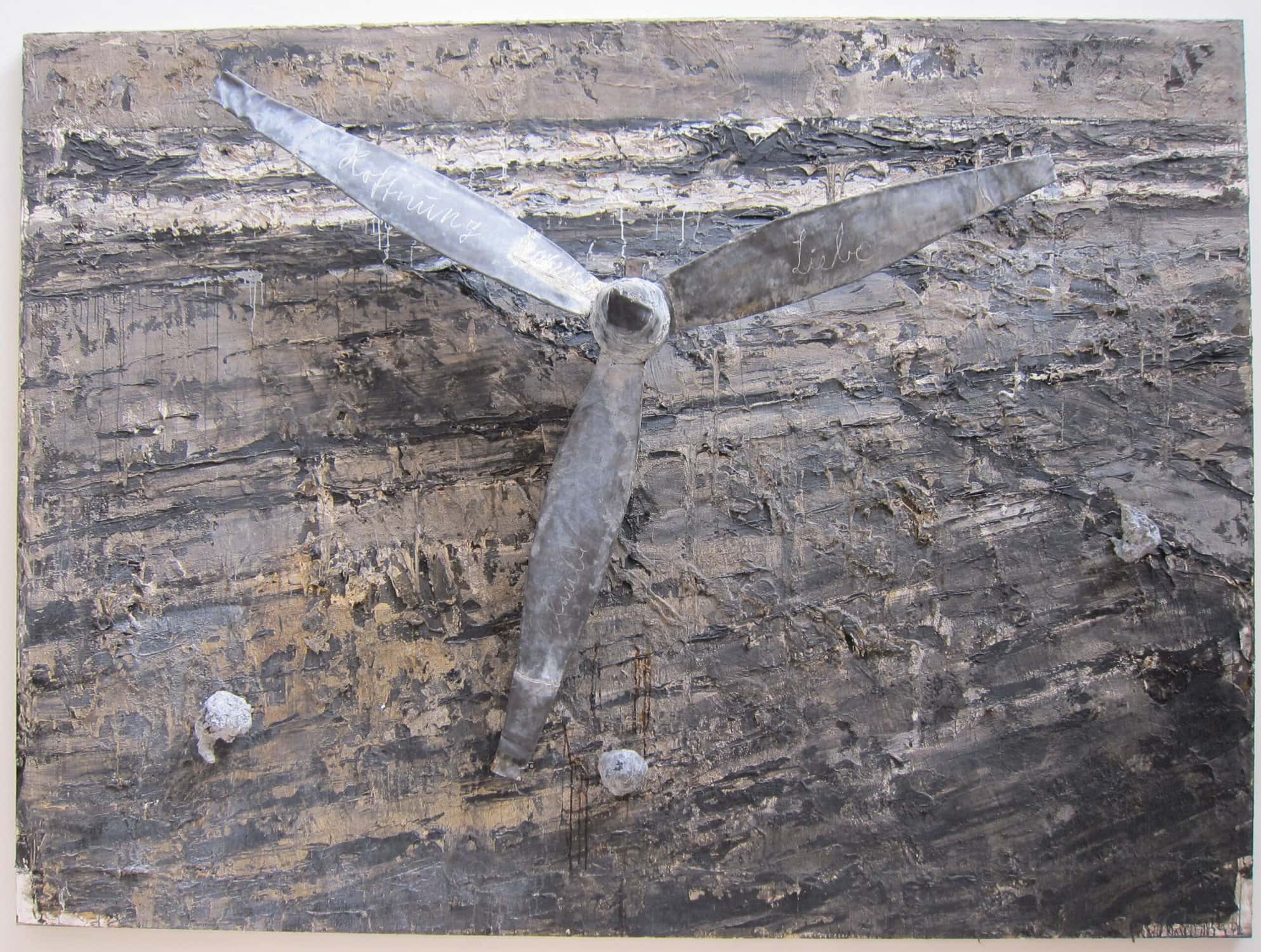Anselm Kiefer, one of the most important contemporary artists of our time, is known for his monumental works that interweave history, mythology and philosophy. His works are multi-layered explorations of human existence, memory and the weight of history. To truly understand his art, it is worth taking a look at his working process and the influences that have shaped him.
The working process: a dialogue between material and concept
Kiefer’s working process often begins with an idea, a text or a historical event that fascinates him. He draws inspiration from literature, religion and history, with themes such as the German past, the Kabbalah or mythology recurring.
the beginning: material as a starting point
For Kiefer, the material is central. Whether lead, ash, earth, plants or concrete – each element carries its own meaning and history. He often starts a work by intuitively selecting materials that inspire him. The texture, weight and transformation of the material play a decisive role.
the development: layers and destruction
Kiefer’s working method is characterised by layering – both in the physical and metaphorical sense. He applies layer after layer, scrapes it off again, destroys parts of the work and rebuilds them. This process can take years. For Kiefer, the work is a living organism that develops and transforms itself.
is a work ever finished?
In Kiefer’s eyes, a work is never really finished. He often returns to older works years later in order to rework them or place them in a new context. This openness reflects his conviction that art – like life itself – is constantly in flux.
The connection between biography and working methods
Anselm Kiefer was born in Donaueschingen in 1945, shortly before the end of the Second World War. The ruined landscapes of the post-war period characterised his early perception of history and identity. These impressions are reflected in his works, which often deal with themes such as destruction, reconstruction and the burden of the past.
Kiefer’s engagement with German history is inextricably linked to his childhood and youth. He began his artistic career in the 1960s, a time when Germany had to confront the crimes of National Socialism. His early works, such as the controversial self-portraits in NS-Salut (Occupations, 1969), already showed his willingness to tackle uncomfortable subjects.
Main themes and motifs: Art as a reflection of the world
Kiefer’s works are characterised by a deep interest in myths, history and the nature of memory. His central themes include:
- History and memory: Kiefer deals intensively with the German past and the question of how history is remembered and processed.
- Mythology and religion: Elements from Nordic mythology, the Jewish Kabbalah and Christian symbolism permeate his work.
- Nature and transience: materials such as earth, plants and ash emphasise the transience of life and the cyclical nature of existence.
Einflüsse: Von Caspar David Friedrich bis Paul Celan
Kiefer draws inspiration from a wide range of artists, poets and thinkers:
- Caspar David Friedrich: The melancholy atmosphere and preoccupation with the German landscape in Friedrich’s works have deeply influenced Kiefer.
- Paul Celan: Celan’s poems, especially Todesfuge, are central sources of inspiration. They offer Kiefer a poetic language in which to process the horrors of the Holocaust.
- Joseph Beuys: As Kiefer’s teacher, Beuys shaped his understanding of art as a transformative force and his love of experimenting with materials.
A tireless seeker
Anselm Kiefer’s working process is as complex as the themes he deals with. For him, art is a form of reflection, an attempt to understand the world and its contradictions. Through his unique handling of materials, his profound themes and his unwavering view of the past, Kiefer remains one of the most influential artists of our time – a tireless seeker whose works challenge us to confront our own history and existence.








